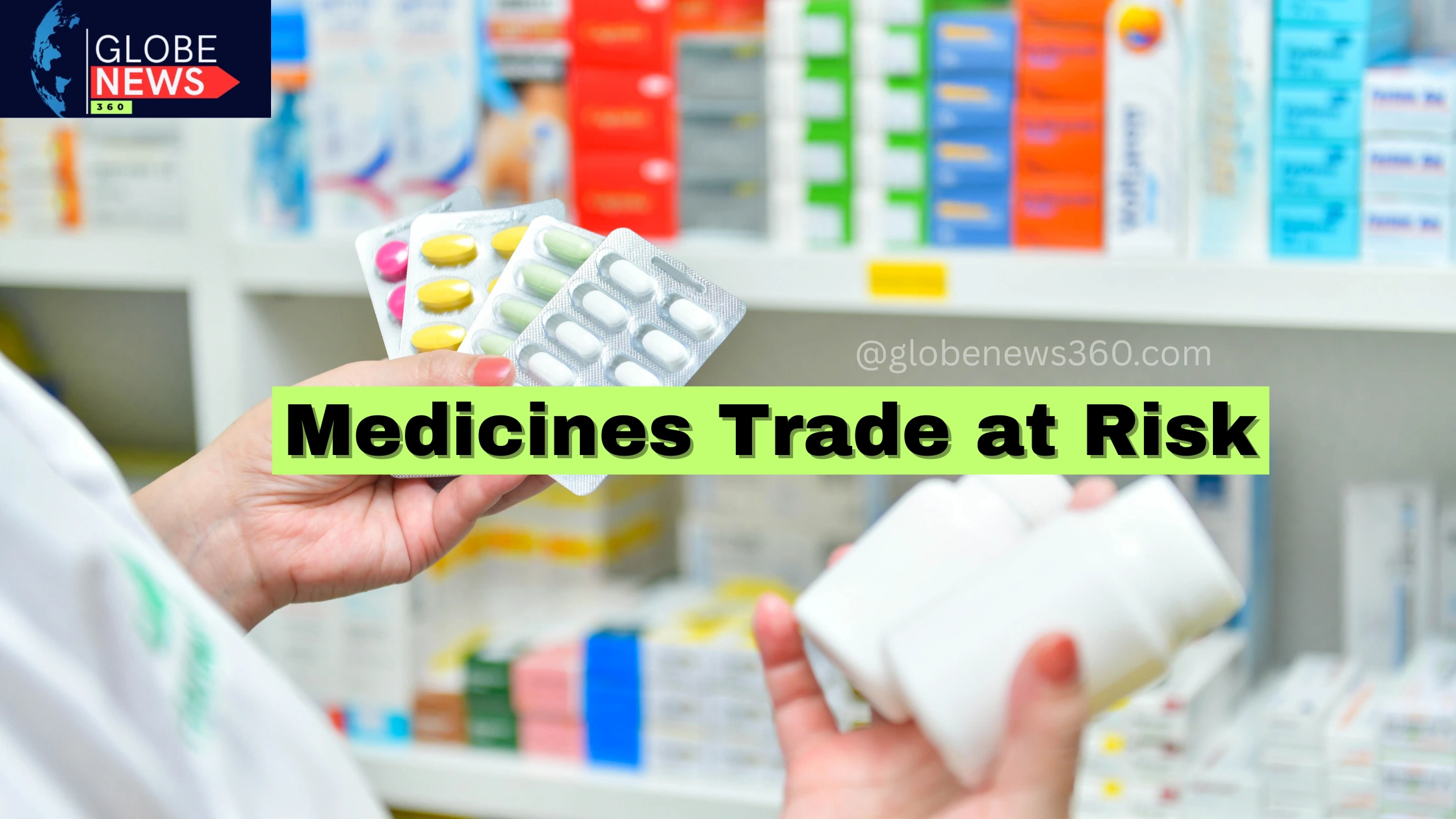In a move that could upend the global pharmaceutical trade, former US President Donald Trump has hinted at imposing major tariffs on imported medicines, ending a decades-long exemption that has helped keep drug prices relatively low across the United States.
This announcement follows Trump’s broader economic strategy of boosting domestic manufacturing, a theme central to his recent campaign and trade policy speeches. With Trump already enacting a 10% blanket tariff on general imports and imposing 104% duties on Chinese goods, it appears that the pharmaceutical industry may be the next target in the escalating global trade war. and what happens.

A Historic Policy Shift for Global Pharma Trade
For nearly 30 years, medicines imported into the U.S. have been largely exempt from tariffs, thanks to a 1995 World Trade Organization (WTO) agreement aimed at making healthcare more affordable across the globe.
This global consensus allowed the U.S. to import billions of dollars worth of finished pharmaceutical products—especially generic drugs—from countries like India, China, and EU nations without imposing significant duties. That could all change soon.
Trump, speaking at a Republican fundraiser this week, said:
“We’re going to be announcing very shortly a major tariff on pharmaceuticals. And when they hear that, they will leave China.”
He further claimed that the upcoming pharma tariffs would be at a level “you haven’t really seen before.” These remarks, though vague, have sent shockwaves through the pharmaceutical supply chain, with stakeholders now scrambling to understand the implications.
Why This Matters: U.S. Drug Imports by the Numbers
In 2024 alone, the U.S. imported $213 billion worth of pharmaceutical products, up from under $85 billion just a decade ago. This surge reflects growing demand for both branded and generic drugs, and America’s increasing reliance on international manufacturers for affordable healthcare.
🔹 India supplies nearly 50% of the generic medicines sold in the U.S.
🔹 The EU exported $127 billion worth of pharmaceuticals to the U.S. in 2024.
🔹 China also remains a key exporter of active pharmaceutical ingredients (APIs) and finished drugs.
Any new tariff policy would drastically reshape this ecosystem. 📉
Indian Pharma Industry on High Alert
The announcement has particularly rattled Indian pharmaceutical companies, many of which depend heavily on U.S. buyers. India exports approximately $13 billion worth of drugs to the U.S. annually.
Currently, American consumers pay little to no tariffs on Indian imports. But India itself imposes nearly 11% in duties on American pharmaceutical goods, a disparity that Trump’s team is reportedly looking to “fix” through “reciprocal” tariffs.
Indian pharmaceutical stocks, including Cipla, Dr. Reddy’s, and Sun Pharma, tumbled following the news. Executives warn that new tariffs would force them to raise prices, particularly on low-margin generics, potentially leading to higher healthcare costs for Americans.
While some Indian firms do have U.S.-based manufacturing facilities, relocating full production is not seen as financially viable in the short term.
European Drugmakers Brace for Disruption
Across the Atlantic, European pharmaceutical companies are also expressing growing concern.
Following a high-level meeting between European Commission President Ursula von der Leyen and top executives from firms like Bayer, Novo Nordisk, and Novartis, the European Federation of Pharmaceutical Industries and Associations (EFPIA) issued a warning.
The EFPIA emphasized that tariff hikes may force companies to relocate production from Europe to the U.S., threatening Europe’s long-standing position as a pharmaceutical manufacturing hub.
“Rising U.S. tariffs could disrupt the flow of medicines globally and jeopardize Europe’s role in pharma production,” the EFPIA noted.
Moreover, EU leaders are now under pressure to consider retaliatory tariffs, which could trigger a trade battle that affects not just manufacturers but also patients and healthcare systems on both sides.
A Global Pharma Supply Chain in Turmoil
The modern pharmaceutical industry is interconnected, with supply chains stretching across multiple countries and regions. Leading firms like Pfizer, GSK, and Sanofi have facilities in Ireland, Germany, the U.S., and India, among others.
Any tariffs imposed on one end of the chain could ripple through the entire system—delaying production, increasing costs, and potentially causing drug shortages.
Global health experts warn that such disruption, if not handled carefully, could undermine public health outcomes, particularly in the face of chronic conditions like diabetes, hypertension, and heart disease, where generic access is critical.
What Happens Next?
As of now, there’s no official tariff rate or timeline provided by Trump’s team. But multiple sources suggest that an announcement could come within weeks, especially with the 2025 presidential campaign heating up.
Industry leaders are already lobbying U.S. lawmakers to reconsider the move, emphasizing the economic and healthcare risks of pharma protectionism.
Meanwhile, watchdogs and analysts are closely monitoring reactions from:
-
The U.S. FDA, which oversees drug quality and approvals
-
Healthcare providers, worried about rising drug prices
-
Insurance companies, who may need to adjust plans and co-pay rates
-
International partners, likely to retaliate with their own tariffs
Final Thoughts: What This Could Mean for You
Whether you’re a patient, healthcare professional, or just following global trade news, this developing story has far-reaching consequences. The U.S. healthcare system’s affordability has long depended on free trade in pharmaceuticals—and new tariffs could disrupt this balance.
With billions of dollars and millions of lives impacted, this could become one of the most significant policy shifts in global healthcare trade history.
Stay tuned for updates on this unfolding story.
